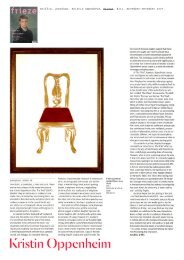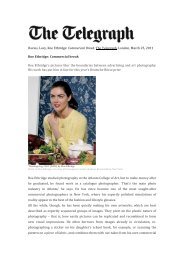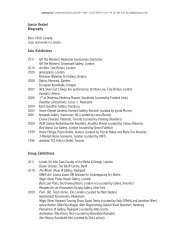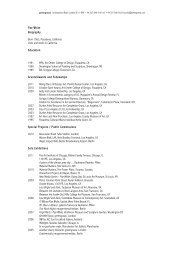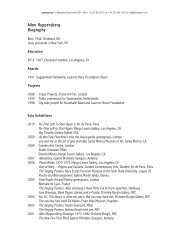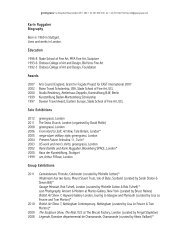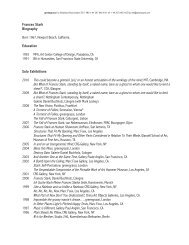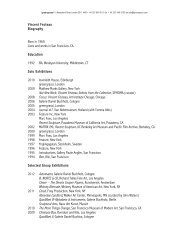Teasdale, Paul, Moyra Davey, Frieze, #44, London ... - Greengrassi
Teasdale, Paul, Moyra Davey, Frieze, #44, London ... - Greengrassi
Teasdale, Paul, Moyra Davey, Frieze, #44, London ... - Greengrassi
You also want an ePaper? Increase the reach of your titles
YUMPU automatically turns print PDFs into web optimized ePapers that Google loves.
<strong>Teasdale</strong>, <strong>Paul</strong>, <strong>Moyra</strong> <strong>Davey</strong>, www.artweeters.com, <strong>London</strong>, December 2011.<br />
Back: <strong>Moyra</strong> <strong>Davey</strong><br />
greengrassi<br />
<strong>Moyra</strong> <strong>Davey</strong>’s films deploy simple strategies to tackle complex subjects. With a<br />
far larger body of work as a photographer of quiet, seemingly inconsequential<br />
images taken of her daily surroundings, they add a further layer of<br />
documentation to her practice: the New York-based artist as writer and reader.<br />
<strong>Davey</strong>’s 2006 film 50 Minutes, for example, focuses on the years she spent in<br />
psychoanalysis, while My Necropolis (2009) analyzes an oblique line from Walter<br />
Benjamin’s correspondence. Part diary, part work-in-progress, the piling of<br />
citation and prose into short, refracted chapters results in reverberating visual<br />
essays.<br />
Switching between autobiography and historical inquiry, her third film, Les<br />
Goddesses (2011), is disquieting in its simplicity. Using little more than a video<br />
camera and voice recorder, <strong>Davey</strong> films herself walking around her apartment<br />
with one earphone in, as she listens to and simultaneously repeats pre-recorded<br />
passages. At just over 100 minutes long, it’s the most sustained of her films and<br />
perhaps the richest. The set-up is clear: <strong>Davey</strong> recounts the lives of the writer<br />
and political activist Mary Wollstonecraft, her daughters Fanny Imlay and Mary<br />
Wollstonecraft Godwin (later Mary Shelley), and their stepsister Claire Claremont<br />
(the piece is fastidiously researched: errata appear twice as subtitles to correct<br />
factual errors). These then segue into reminiscences about <strong>Davey</strong>’s own family.<br />
Images of the artist’s sisters punctuate the film, as <strong>Davey</strong> riffles through a series<br />
of black and white photographs she took of them and herself as young, defiant<br />
women in the late 1970s.




